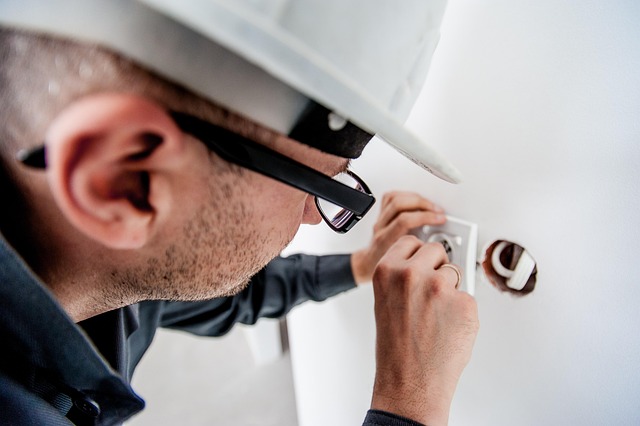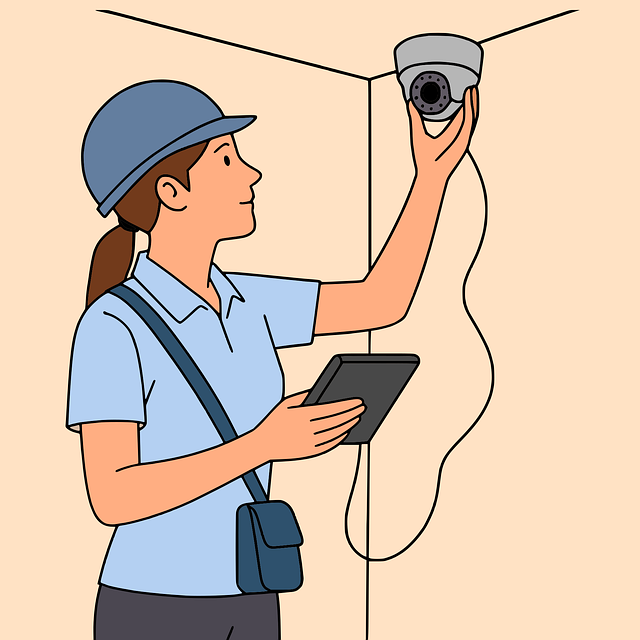Electricians tackle diverse challenges with electrical panels, from minor issues like flickering lights to serious hazards such as arcing and short circuits. Regular maintenance and troubleshooting skills are vital for safety, reliability, and cost savings. Before working, turn off power at the breaker box, inspect visually, use voltage testers, check circuit loads, upgrade components as needed, and replace outdated panels with modern models offering enhanced safety and management.
“Unsure about that humming sound or flickering lights? Understanding common electrical panel issues is the first step towards ensuring your home’s safety and stability. As a homeowner, knowing how to diagnose and resolve problems can save you precious time and money.
This guide delves into the heart of electrical panels, offering a step-by-step approach to troubleshooting and even upgrading your panel to enhance performance. Skip the confusion and consult our expert tips—your go-to resource for keeping your home’s electrical system in check with the help of a qualified electrician.”
- Understanding Common Electrical Panel Issues
- Step-by-Step Guide to Troubleshooting and Upgrading Panels
Understanding Common Electrical Panel Issues

Electricians often encounter various issues with electrical panels, which can range from simple problems to complex situations. Common complaints include flickering lights, circuit breakers tripping frequently, and power outages in specific areas of a home or business. These symptoms may indicate overloaded circuits, faulty wiring, outdated panel equipment, or even more serious underlying problems like arcing or short circuits.
By identifying these issues early, electricians can prevent potential hazards and ensure the safety and reliability of the electrical system. Regular maintenance checks, such as inspecting for loose connections, checking the condition of fuses, and testing voltage levels, are essential in addressing minor problems before they escalate. Addressing electrical panel issues promptly not only enhances the overall performance of the system but also helps avoid costly repairs or even catastrophic failures.
Step-by-Step Guide to Troubleshooting and Upgrading Panels

Troubleshooting electrical panels is a crucial skill for any electrician, ensuring safe and efficient power distribution. Here’s a step-by-step guide to navigating this process:
1. Safety First: Turn off the main power supply at the circuit breaker box before beginning. Protecting yourself from electric shock is paramount. Use insulated tools when testing circuits to avoid contact with live wires.
2. Inspect Visually: Examine the panel for any signs of damage, loose connections, or scorch marks. Check fuse boxes for blown fuses, and inspect circuit breakers for tripped switches. Visual cues can often point to the root cause of an issue.
3. Test Circuits: Use a voltage tester to check each circuit individually. Ensure power is not running through circuits that should be off. This helps identify faulty wiring or misconfigured switches.
4. Check Load and Overload: Oversized electrical panels can lead to overloading, causing issues. Verify the panel’s capacity matches the building’s current and anticipated electrical load. Upgrading to a larger panel may be necessary if demands exceed current specifications.
5. Replace or Upgrade Components: If testing reveals faulty components like fuses or breakers, replace them with appropriate equivalents. For outdated panels, consider upgrading to newer models that offer enhanced safety features and better management capabilities.
When it comes to addressing electrical panel issues, understanding common problems and having a structured troubleshooting process are key. By following the step-by-step guide provided in this article, homeowners can gain valuable insights into diagnosing and resolving these issues. Upgrading to a modern, efficient panel is also within reach, ensuring better home safety and reduced energy costs. Remember, for complex or critical situations, it’s always best to call a qualified electrician for professional assistance.
